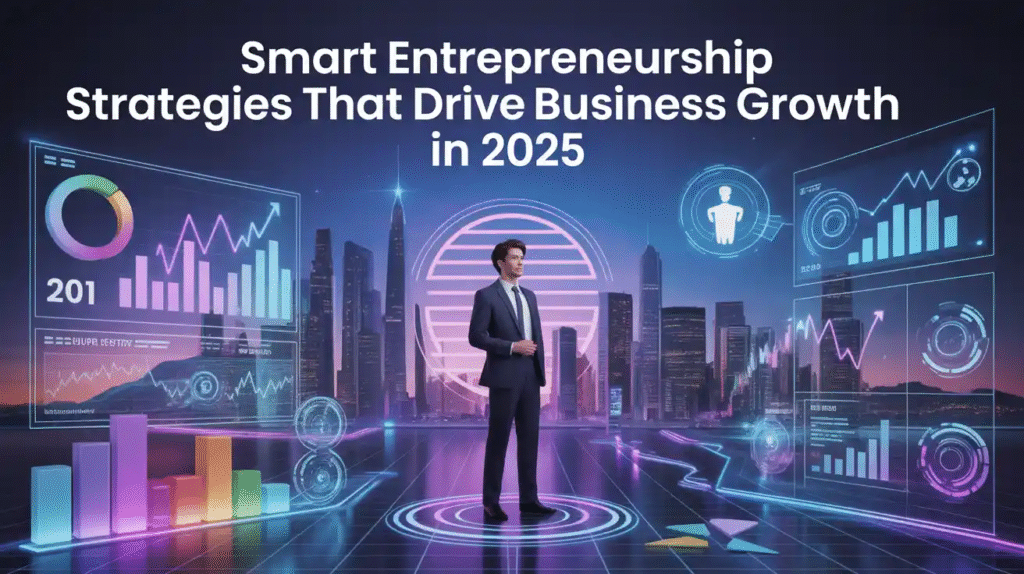Every entrepreneurs start with a vision a perception that one can address an issue, fill a gap or effect change. However, the road to the entrepreneurship is hardly straight. Entrepreneurs are continually exposed to risks, opportunities and surprises in terms of securing funding, dealing with competition etc. As a compass that helps explorers start moving when they find themselves in uncharted lands, businesspeople cannot do without orientation in the trade to achieve harmony between risk control, sustainable development, and innovation.
This blog addresses the manner in which entrepreneurs can effectively navigate business challenges, embrace innovation as well as pursue growth without disregarding long term sustainability. Through knowledge and education of entrepreneurial surroundings, leaders are in a position to navigate uncertainty and create opportunity out of it.
Understanding the Nature of Entrepreneurial Risk
Entrepreneurship cannot be subdivided without risk. There are potential risks and rewards to every action taken such as introducing a new product, moving into a new market as well as employment of critical personnel. Effective business persons do not view risk as something that is there to be feared but rather managed.
Risk is in the form of entrepreneurial risk The most evident one is financial risk since it is unclear how much money you will have in the early days. Market risk occurs when the customer demand is uncertain or there is a high level of competitions. The resulting operational risk due to inefficiencies in any part of the processes, supply chain or teams. Reputational risk includes the case when a one-time failure leads to the loss of trust and credibility.
Successful entrepreneurs are those who do not respond to dangers, but they anticipate them. As an example, a technology startup company launching an application should expect barriers to user adoption, regulatory compliance and cybersecurity risks. By realizing the possible barriers in advance, the startup has time to reduce risks.
The secret is not whether to get rid of risk entirely as it is not possible but figuring out the risks to reward assessment. A calculated risk can be the key to transformative growth and eliminating all risk can stall innovation and curtails opportunities.
The Compass Point of Growth: Building Sustainable Businesses
Risk poses the background whereas growth strategies in entrepreneurial ventures define whether a venture will succeed or not. Hundreds of businesses have collapsed not because the idea was not able to grow but they aimed at fast growth without a sustainability strategy.
Entrepreneurship growth ought to be strategic. Expansion into new market, product diversification or scaling operations needs resources, planning and versatility. Excessively pursuing revenue may result in overexpansion, inadequate cash flows and poor relations with customers.
The entrepreneurs ought to implement growth strategies that are compatible with their inherent vision and capabilities. Take, as an example a small e-commerce brand that is willing to prioritize its focus on customer retention and customer referrals program before creating a very active expansion to foreign markets. Similarly, a service-based company can specialize in the reputed quality of one particular niche then diversifying.
Other ways to achieve sustainable growth entail the creation of a good internal framework. Entrepreneurs should invest in team building, putting up systems and financial controls that will foster sustainability over a long period. Such foundations are the only way that growth can be achieved without collapsing under pressure.
Ultimately, growth is not though of as a sprint but a marathon; one which needs toughness, tenacity, and continuity.
Innovation: The Driving Force of Entrepreneurship
Innovation is what keeps entrepreneurship going should the risk be the hurdle and growth, the aim. Innovation is a key ingredient in the business that can gain or fail completely in this dynamic world.
Innovation in entrepreneurship does not only include new technologies, or groundbreaking ideas. It also comprises incremental developments, innovative solutions and modifying available solutions to work with new ideas. An example of innovation described above would be a small cafe launching a digital loyalty app, despite the fact that the technology per se is not innovative.
As entrepreneurs, the most successful ones adopt innovation in their psyche. They are open minded, ready to experiment and change direction when it becomes necessary. The success of remote work technologies companies that rapidly shifted toward the provision of virtual alternatives during the times of global disruption did not only ensure their survival but provided them with success.
Innovation should, however, be deliberate. Trying to follow all the new trends can result in the squandering of resources and loss of focus. Entrepreneurs ought to focus on assessing innovations in terms of their customer relevance, business objective and long term impacts.
The power to become innovative regularly may emerge as the difference between the successful and the demise of any business.
Navigating Business Challenges with a Strategic Compass
The career of an entrepreneur is one with multiple forks in the road where the choice steers the path of the business. To cope with business demands, entrepreneurs must be able to balance between vision and practicality, ambition and precaution and creativity and structure.
Resource scarcity is one of the frequently used problems. Entrepreneurs usually work within the confines of limited capital, time and talent. Priority cannot be ignored about such cases. There is also no need to do everything at once, but concentrate on the most effective activities to achieve some progress without stretching resources to their limit.
The other difficulty is competition. Markets are currently saturated and new players are coming up at high magnitude. In order to be memorable, business leaders should also develop an excellent value offering that appeals to the customers. Differentiation can be in having excellent service to the customers, having a unique image, or imaginative price structures.
Issues of leadership are also critical to see as well The role of the entrepreneur needs to shift as a business grows to a leadership position as opposed to a doing position. Effective team delegation, team motivation and sustenance of company culture are key success issues in the long run.
Resilience is tested through external challenges, which may include economic slowdowns, shifting regulations, or technology. The companies that survive are those who are prepared and put resilient systems in place in advance and remain flexible and ready to adjust when they are needed.
Making your way through these complications is not about coming into possession of the answers but rather about having a mindset, tools, and strategies that allow you to adapt fast and make well-informed choices.
The Entrepreneur’s Mindset: Turning Challenges into Opportunities
Entrepreneurship boils down to a mindset of resilience. Obstacles are not traps but stepping stones to development and invention. When it comes to transforming challenges into opportunities, entrepreneurs that take this mindset have a greater chance of achieving success.
E.g., a supply chain interruption might cause a company to find a local supplier, building healthier ties to the community and saving on costs in the long-term perspective. In a similar manner, customer complaints can provide an indication of improvement areas that would result in increased customer satisfaction and loyalty once accommodated.
The entrepreneurial attitude has been defined by its ability to adjust, persevere and optimism. What is believed is that regardless of the uncertainty one is bound to meet on the road, there are solutions to those willing to find them.
Resilient entrepreneurs are constant learners, they can get criticisms through failures, mentors and even the market. They are not afraid to risk; they do not fear because they feel potential growth can not be achieved without risk. Most importantly, they synchronize their plans to the long-term vision and such that a short-term difficulty should not avert their ultimate plans.
Case Examples: Lessons from Real Entrepreneurs
History knows lots of examples of entrepreneurs, who managed to go through risks, pursue the development, embrace innovations.
Take the example of Airbnb which started out initially as a small initiative to lease air mattresses out of a living room. The following were the risks involved: financial risk, market skepticism and regulatory risk faced by the founders. Nevertheless, through customer experience and digital advances, they created a global platform that enabled the hospitality sector to revolutionize itself (Harvard Business Review on Airbnb’s growth).
Another one is Spanx, which was launched by Sara Blakely. She got into a large competitive market with giants in the market, with limited resources showed how she overcame the odds. She achieved this by blending persistence, ingenuity of product and clever marketing to make Spanx a billion dollar brand (Forbes profile of Sara Blakely).
The stories show that success is not always about not making mistakes. Rather it is the result of maneuvering through them using a clear vision, toughness, and creativity.
Conclusion: Charting Your Entrepreneurial Journey
Entrepreneurship is not a simple journey but an adventure in new land. In order to succeed, businesspeople require a compass where both risks and growths, as well as innovations, are balanced. Risk has to be handled sensibly, sustainability has to be sought in growth and there has to be a consistent embrace of innovation.
Developing resilience, adaptability, and strategic vision will help entrepreneurs guide their businesses through the hardships by remaining confident. Any challenge is seen as a lesson to learn, grow and make the business firm stronger.
Whether a budding or an experienced entrepreneur, this path is hard to predict but with the right guide, the destination is not far.




